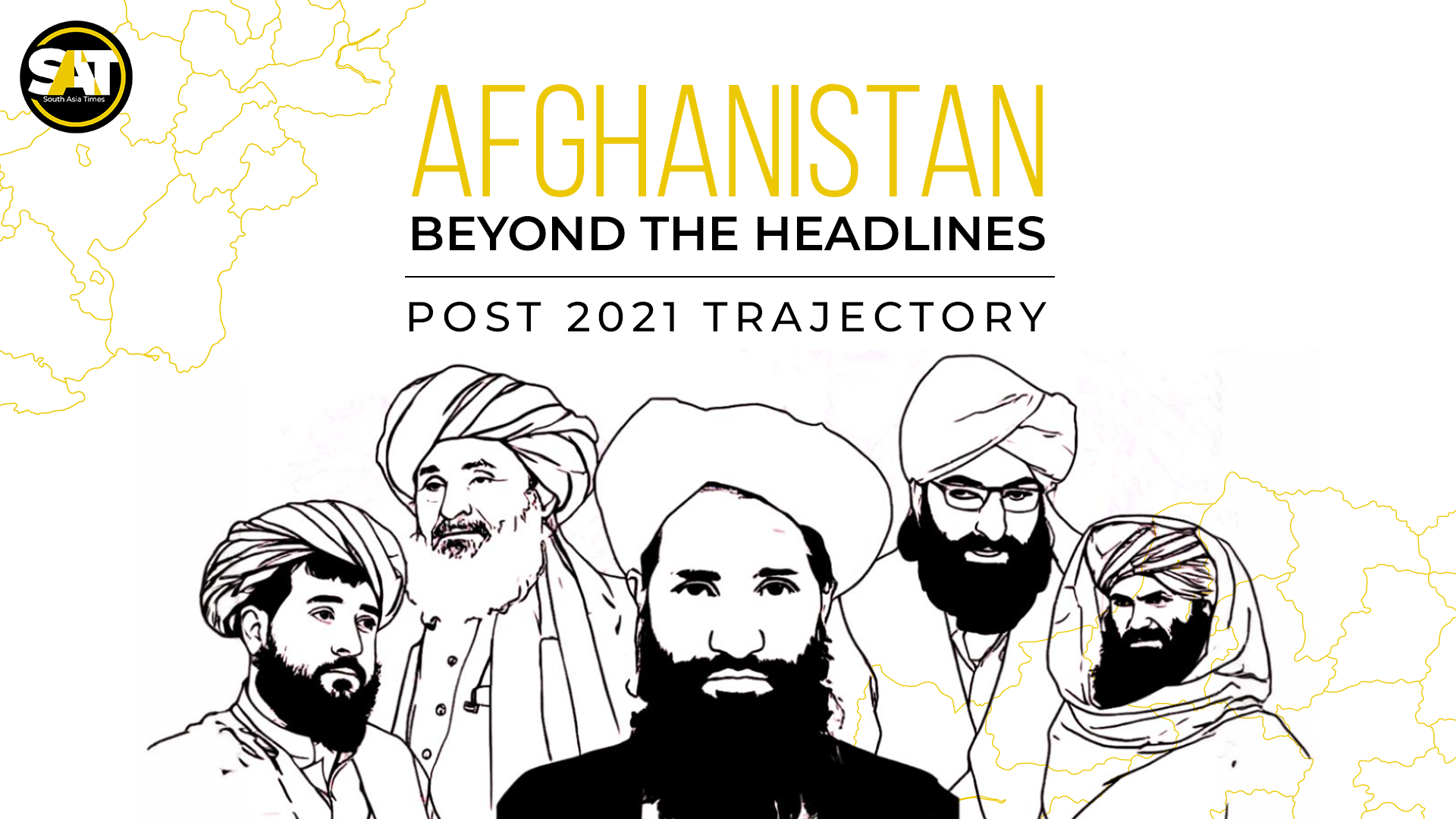
Nov 2025
Afghanistan’s post-2021 trajectory has shifted sharply from early expectations of stability. This SAT Study traces how the country has evolved into an interconnected system of political exclusion, economic contraction, militant mobility, and humanitarian stress, with direct spillover for its neighbours, especially Pakistan.
Drawing from verified field inputs, regional interviews, incident logs and multi-source datasets, the Study highlights four reinforcing pressures shaping Afghanistan today:
1: A Factional and Exclusionary Governance System
Power is concentrated in a narrow Kandahari elite, with the Haqqani Network and Yaqoob/Fasihuddin blocs competing for influence.
Ethnic representation is minimal, women’s participation is nearly erased, and governance operates through decrees, not institutions.
2: Expanding Militant Safe Havens and Cross-Border Activity
TTP, ISKP, AQ, ETIM/TIP, IMU/TTT and BLA maintain active presence across several provinces.
Pakistan has recorded rising infiltration patterns, identified Afghan nationals in major attacks, and mapped dozens of cross-border staging points.
Despite public denials, operational freedom and local facilitation remain evident.
3: An Economy Under Structural Strain
GDP per capita has fallen to near-2010 levels; poverty exceeds 90%.
Border closures have frozen a US$1.8 billion corridor, stranded 11,000 containers, and triggered steep increases in food and fuel prices.
Alternatives via Iran, Central Asia or air corridors are significantly costlier and cannot absorb previous volumes.
Internal Taliban rifts now shape control of crossings, customs, smuggling nodes and revenue flows.
4: A Humanitarian Load the Emirate Cannot Absorb
More than 2.4 million Afghans have returned in 2025 from Pakistan, Iran and European states.
Despite US$80 million/month in humanitarian inflows, Afghanistan has no robust integration or service-delivery framework.
Provinces such as Kabul, Nangarhar, Herat and Nimroz face severe pressure on shelter, water and employment reflecting structural capacity gaps rather than external decisions.
Across all domains, the SAT Study identifies patterns, not isolated events:
Militant sanctuaries rising as diplomacy stalls;
Economic pressures intensifying factional rivalry;
Repatriation outpacing absorption;
And narrative operations shaping public perceptions on both sides of the border.
For Pakistan, these dynamics create a multi-vector challenge that includes security, trade, refugees and information warfare, all combined, driven by a once-friendly neighbour now fractured, unpredictable and crisis-ridden.
This Study is based on a mixed-method approach combining:
1: Field Inputs and Ground Sources
Verified reporting from SAT correspondents, border-area trackers, Afghan and Pakistani local contacts, and community-level informants across KP, Balochistan, Nangarhar, Khost, Kabul, Laghman, Herat and Paktika.
2: Multi-Source Incident Logs
Cross-referenced datasets from:
3: International Reporting & Institutional Datasets
UN Monitoring Team (35th/36th), SIGAR (66th/68th), UNAMA, World Bank, UN Women, WFP/UNOCHA humanitarian tracking, IOM returnee data.
4: Media and Digital Ecosystem Analysis
Content flows from official Afghan spokesmen, GDI-aligned channels, diaspora networks, Indian media ecosystems, and sentiment/narrative trend mapping.
5: Expert Consultations
Off-record conversations with regional analysts, former diplomats, trade chamber representatives, and border logistics stakeholders (Torkham, Chaman, Spin Boldak, Hairatan).
6: Triangulation and Verification
All claims in the Study are triangulated through at least two independent sources or datasets before inclusion.
Note: This is not a political document. It is a research product synthesizing multi-source evidence, field verification, and trend analysis across 2021–2025.